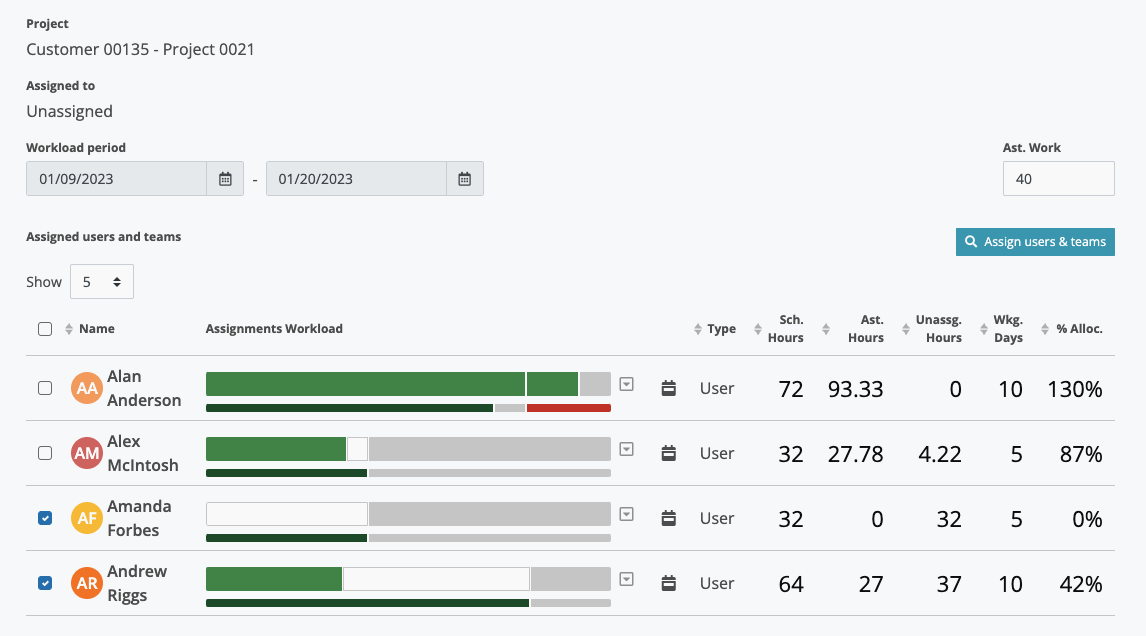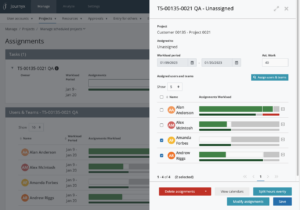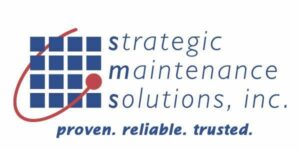Journyx Time Tracking Tools for Smart Businesses
Staff Capacity Tools
Effective resource capacity planning and staff management means having teams on hand that are just the right size and skill level for your projects.
Imagine it: you’re on a deadline, pitting yourself against the clock to do your best work in the shortest amount of time possible. Your well-meaning spouse, colleague, or friend asks the infamous question, “How can I help you?” You smile in appreciation and then realize: they can’t help you. At this moment, what you need to do can be done only by you—and you are stretched thin. On the other hand, some days you might find yourself reorganizing your desk and color-coding your pen holders just to feel productive.
While there’s no perfect solution to ensuring that every day is scheduled out to the perfect level of productivity, there is a way to optimize the utilization of your employees in order to avoid the detrimental extremes of overworking them or letting them go idle: staff capacity management.
What Is Staff Capacity Management?
Staff capacity management is the process by which organizations consistently align their available employee hours against the needs of their organization. Effective staff capacity management means having teams on hand that are just the right size and skill level for your projects. For staff capacity planning to be successful, companies need to know when to enlist the best people for the tasks that need to get done while ensuring that there is enough work to fulfill them.
To fully understand staff capacity management, you first have to understand a few key terms:
- Capacity: This is the maximum amount of work that can be completed by employees in a given time—usually measured in hours worked
- Planning: Scheduling employee hours against the expected amount of work
- Utilization Rate: The percentage of hours divided by the number of hours worked
- Lag Strategy: Planning to have enough resources to meet true demand at any given time without much extra capacity available in the event of a demand surge
- Match Strategy: Monitoring trends and increasing employee capacity in small but frequent increments following demand increases
- Lead Strategy: Increasing employee capacity in large amounts in preparation for meeting projected demand increases
- Resource Allocation Software: Project management tool for planning, allocating, and tracking resources, including people
Why Is It Important to Manage Staff Capacity?
Knowledge is power. If you don’t know whether or not you have team members with the correct skills available, and for how much time, you can’t make informed decisions about which projects to take on and when to schedule them.
Thriving organizations hinge on the delicate balance of supply and demand by keeping new projects coming in without overworking their team or overcommitting to clients by making promises they can’t keep.
Maybe even more important is admitting that sometimes projects take on personalities of their own. Without the ability to see what people are working on and make quick decisions about how to adjust resources when needed, you run the risk of shortages or bottlenecks in the pipeline. Weather happens, people fall ill, and, let’s be honest, your hardworking team members deserve vacations every now and then.
With good capacity planning measures in place, you can keep your team just the right amount of busy, increase project efficiency, and make it easier to plan for the future. Whether or not your company leaders decide to take on a lag, match, or lead strategic approach depends on having good capacity planning data so that they can make the right decisions in the right market setting.
Without knowing which team members you have available and when—and with what skill sets—you might end up throwing darts in the dark when it comes to answering the most important kinds of organizational questions, like:
- When should you plan for hiring events, freezes, or staff training?
- How should you prioritize and schedule your projects and teams?
- Who is adequately meeting performance objectives, and who needs support?
Not least of all, effective staff capacity management increases the happiness and well-being of your teams. While soft skills like communication, transparency in leadership, and team-building are important in maintaining the health of your organization, the primary cause of burnout and unhappiness is overutilization of team members because of poor capacity management.
By tracking team members’ time and using good data to schedule teams in a way that best utilizes their skills, project managers can help organizations prevent burnout. Not balancing the workload appropriately results in lost productivity through disengagement, increased sick days, and even withdrawal from the project or team.
Knowing your staff capacity—and applying that knowledge—helps you ensure that your projects are completed successfully. In addition to team burnout, insufficient or ineffective capacity management comes with other serious risks:
- Budget overruns
- Wasted resources
- Quality deficits
- Schedule overruns
- Project failure
- Client dissatisfaction
How do you measure staff capacity?
Measuring staff capacity is a complex, but not mystical, process. Having the right kind of resources at your fingertips means you’re relying more on smart tools than trying to apply what you learned in calculus class to your projects.
Smart software like Journyx provides workforce data insights on time and expense tracking, resource allocation, and project portfolio management to deliver high-level results. By following a few basic steps with the help of an enterprise solution tool like Journyx, you can leverage your team to get the best results.
Take Stock of Your Organization: Are you all on the same page? Do all leaders agree that now is the right time to work toward a strong staff capacity management strategy? Examine what barriers to planning currently exist, like data gaps, and work to determine how to gather that information. Create systems for communication among leadership and at all levels. If employees will be required to follow new protocols, consider how that information will be rolled out to ensure both compliance and buy-in.
Know Your Resource Capacity: Use a tool like Journyx Smart Timesheets to have team members track their time. If you don’t know where your team members’ time is being spent, you can’t make decisions for the future. Employee timesheet data is valuable business intelligence that you can use to make project management decisions, meaning it is essential to capacity planning.

Create a Skills Inventory: Enlist your human resources team to draw up a skill inventory for every team member that includes qualifications, certifications and safety knowledge, secondary skill sets, areas of expertise, and software and tool capabilities. If you’re not sure what to include, remember that sometimes the devil is in the details. Sometimes it’s the soft skills of its lead that can make or break a team when it’s crunch time.
Prioritize Projects: Identify the benefits and risks of each project, what commitments have already been made, and what projects are dependent on others in order to move forward. Consider the resources required and their availability, and plan for both expected and unexpected delays. These may include holidays, employee time off, and possible revisions to the scope of the project.
Allocate Resources: Apply the data you have gathered on resource capacity to align with your company’s capacity planning strategy — remember lag, match, and lead? — to assign resources to projects as needed. Using a resource allocation software like Journyx PX takes the mystery and guesswork out of this step. You can confidently assign the right team members to the right work by tracking productivity and performance and reduce costly revenue suckers like underutilization or burnout.
Report, reflect, refine, and repeat: Stay on top of your capacity planning process and don’t be afraid to evaluate often, especially if your organization is new to a structured staff capacity management process. The better your historical data, the better your future forecasting will be.

Why Should We Centralize Our Staff Capacity Management?
Even though capacity planning is a human issue, it doesn’t have to be prone to human error. Even if your organization has a solid foundation and is using a staff capacity planning strategy already, if your data isn’t centralized, you’re missing out. Often, companies tend to bring aboard tools that work best for different teams—so Human Resources may have a preferred software while IT may have another.
However, when you consider how important it is that all teams work together and that a variety of data is readily accessible at the executive level, it makes sense to use a centralized software. When projects need to swap or reallocate resources in response to unexpected turns of events, every minute counts. Having a clear picture that everyone can access is crucial to reducing lag time.
At every user level, Journyx can help your organization save time and effort, from mobile time entry and approval to seamless integration with deep-dive analytics platforms like PowerBI. The ability to automate and simplify timesheets and client invoices means fewer hours spent reconciling errors and happier people all around.
Numerous Journyx users in a variety of industries have seen positive results from their implementation of Journyx tools. For more information about how Journyx can support your organization with staff capacity management, schedule a customized demo online or call (800) 755-9878.
Let’s Get Started. Book a Demo Today.
Journyx helps you track time for projects, payroll, and more. Learn how Journyx can help you use time to your advantage in your business.




